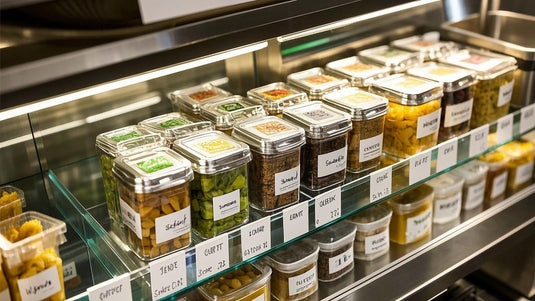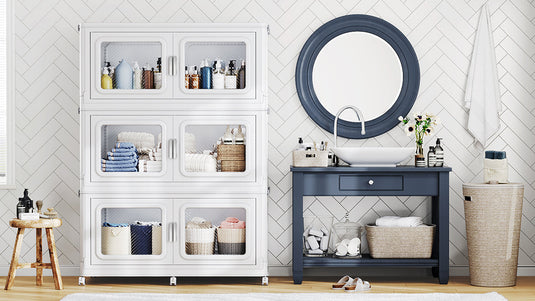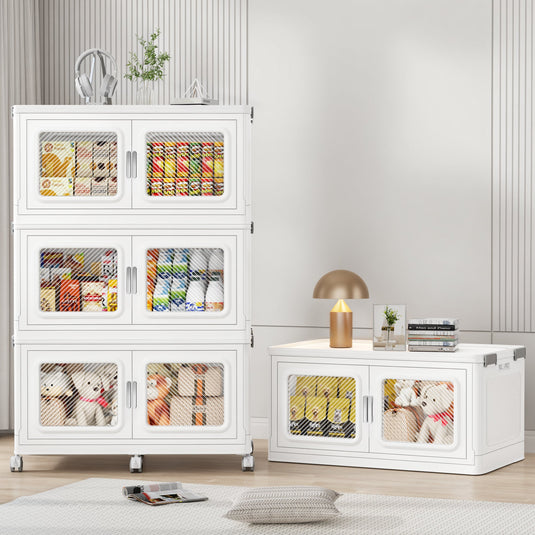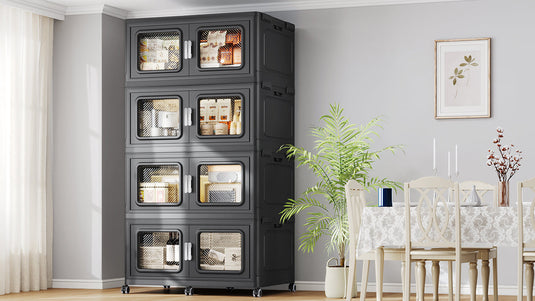Food storage containers are a kitchen essential, helping us keep leftovers fresh, organize pantry staples, and pack meals on the go. But with so many sizes, shapes, and styles available, it’s easy to end up with a cluttered collection. So, how many food storage containers do you actually need? Let’s break it down to help you find the perfect balance between functionality and simplicity.
---
1. Assess Your Lifestyle and Cooking Habits
The number of food storage containers you need largely depends on your daily routine and cooking habits. Ask yourself:
- Do you cook in bulk? Meal preppers or families who cook large batches will need more containers.
- Do you pack lunches often? If you frequently take meals to work or school, you’ll need a set of portable, leak-proof containers.
- Do you store pantry items? If you buy dry goods in bulk (like rice, pasta, or snacks), you’ll need airtight containers for organization.
- How often do you eat leftovers? If you regularly save leftovers, you’ll need a variety of sizes to accommodate different portion sizes.
---
2. Consider the Types of Containers
Not all food storage containers are created equal. Here’s a quick guide to the types you might need:
- Small Containers (1-2 cups): Ideal for snacks, sauces, dressings, or small portions of leftovers.
- Medium Containers (3-5 cups): Perfect for single-serving meals, side dishes, or chopped vegetables.
- Large Containers (6+ cups): Great for storing family-sized portions, soups, or bulk ingredients.
- Specialty Containers: Consider compartmentalized containers for lunchboxes or tall, narrow ones for liquids like soups and broths.
---
3. Start with a Basic Set
If you’re just starting out or want to streamline your collection, a basic set of 8-12 containers is usually sufficient for most households. Look for a set that includes a mix of sizes to cover your needs. For example:
- 2 small containers
- 4 medium containers
- 2 large containers
This range allows you to store leftovers, pack lunches, and organize pantry items without overwhelming your kitchen cabinets.
---
4. Add Containers Based on Specific Needs
Once you have a basic set, you can add more containers based on your unique needs:
- For Meal Preppers:Add 3-5 extra medium or large containers to store prepped ingredients or meals for the week.
- For Bulk Shoppers: Invest in 4-6 large, airtight containers for storing dry goods like flour, sugar, or cereal.
- For Families: Consider doubling your basic set to accommodate larger portions and multiple lunchboxes.
---
5. Prioritize Quality Over Quantity
Instead of buying a massive set of low-quality containers, invest in a smaller number of durable, versatile containers. Look for features like:
- Airtight seals to keep food fresh.
- Microwave, freezer, and dishwasher safety for convenience.
- Stackable designs to save space.
High-quality containers may cost more upfront, but they’ll last longer and save you money in the long run.
---
6. Declutter Regularly
Over time, food storage containers can accumulate, especially if lids go missing or containers become stained or damaged. To keep your collection manageable:
- Recycle or donate containers you no longer use.
- Match lids to containers and discard any mismatched pieces.
- Replace damaged containers to maintain a functional set.
---
Final Thoughts
There’s no one-size-fits-all answer to how many food storage containers you need, but a well-thought-out collection can make your kitchen more organized and efficient. Start with a basic set, add containers based on your lifestyle, and prioritize quality to build a collection that works for you.
Remember, the goal is to have enough containers to meet your needs without creating unnecessary clutter. Happy organizing!
---
What’s your food storage container setup like? Share your tips and experiences in the comments below!




